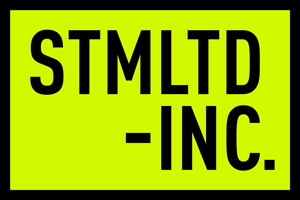We’re not going back to butts in chairs
By Robb Wagner

After more than two years of hoping, waiting and denying, it appears the industry is finally starting to come to grips with facts. The creative workplace, as we once knew it, is no more. And with phenomena like the Great Resignation and Quiet Quitting now permeating our vernacular, people are also warming up to new ideas. But accepting facts and warming up will not be enough. It’s time for real change.
I recently attended the Creative Ops LA conference, where creative operations teams, in-house agencies and the companies that support them congregated to conceptualize the future of creative work.
As an exhibitor, I got to talk with attendees between sessions when they emerged for coffee and snacks, but the more profound conversations happened when attendees were back in session. That’s when the suppliers providing lifeline support to the in-house creative teams at different companies were left alone to size each other up (in a friendly way) across the coffee kiosk in the middle of an empty hotel ballroom.
Looking around, all the pop-up tradeshow backdrops were similar. Company names, branding and even some of the taglines seemed to mirror each other. This is not a criticism but rather a testament to the level of need that in-house teams at brands have had during an extended period of explosive growth. With such a huge demand, there has been an equally large supply of support services, such as creative staffing and management companies, stepping up to address the challenge.
Typically, exhibiting companies at a conference would be hyper-focused on making the right impression on the attendees, but something else was happening at this event. I saw looks on exhibitor faces that I hadn’t seen before. The people with all of the answers looked like they had questions.
Could this be the turning point, the epiphany, the ‘aha’ moment? I wondered. Is it finally sinking in? Are people waking up from workplace denial and coming to terms with the idea that we’re not going back to pre-pandemic norms?”
The short answer is yes, but the implications are as heavy as these times. Here’s why.
Pre-pandemic, when in-house teams were overwhelmed with too much work (last time I checked, 90% were), they could turn to any number of external companies for help. That help came in the form of butts in chairs. External companies supplemented, or—in some cases—even provided and managed all of an in-house agency’s creative staff.
This was the most logical and frictionless pre-pandemic option, considering the only other logical choices would have been sourcing and managing external resources such as creative studios or freelance artists to work outside of the home office. Why would companies subject themselves to the pain of searching for talent, reviewing portfolios, scheduling calls, explaining jobs and checking availability and negotiating rates, when they could order up butts in chairs?
Which leads to the big post-pandemic dilemma: With fewer people willing to put their butts in chairs, the exponentially more difficult work of sourcing and managing external talent and workflow is quickly growing into a problem.
The issue is not the actual sourcing of talent, managing talent or managing workflow. The issue is doing it in a hybrid environment where more creatives work remotely. People still don’t realize or accept how much this changes the game. Going hybrid will magnify creative talent sourcing and workflow management problems into chronic headaches with the potential to break people and businesses. Or will it?
It is possible to minimize or even eliminate these problems altogether. I know it because I’ve done it. Ten years ago, I transformed my own creative studio from an in-house environment to a hybrid one. I started with tectonic mindset shifts, which led me to develop a completely new work methodology. What I didn’t realize at the time was how acting on my mindset shifts would change everything about my job and my life. Suddenly I was doing work that fulfilled me and I was home for dinner. I could finally be proud of my work and attend my kids’ soccer matches on the weekends.
Below are 7 actionable mindset shifts that helped me get there:
Develop rules for determining which jobs would be best to keep in-house and which jobs would be best to outsource.
Make the ability to follow written instructions the most important attribute to look for in remote talent.
Let artists spend their time reviewing your jobs instead of you spending your time reviewing their portfolios. Let them pick and choose their own work, and you’ll get better work.
Consider that in-house talent and remote talent should have a completely separate set of prerequisites and qualities.
Invest more time and effort into making rock-solid briefs and spend less time and effort managing artists across the duration of a project. Give them everything they need to do their best work.
Assign monetary value to work you’re getting and pay artists for deliverables not time.
Stop jumping around between digital work sites all day long.
Of course, some of these mindset shifts will also require new methodologies, workflows and tools that will be easier adopted than invented. But we’re dealing with reality as an industry, and the reality is we’re not going back to butts in chairs. Not anytime soon.
If you start with mindset shifts, the rest will follow.
